|
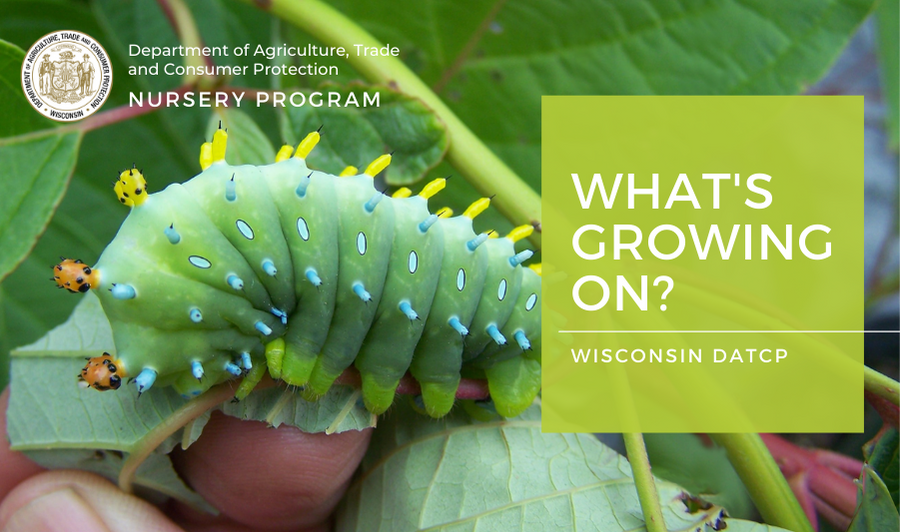 _____________________________________
Dear Wisconsin nurseries, Christmas tree growers, and gardeners:
Growing degree days (GDD)(simple B50) as of June 14 were 421 in Bayfield, 497 in Medford, 509 in Wausau, 578 in Hancock, 588 in Green Bay, 562 in Racine, 700 in Madison, and 788 in La Crosse. A few pests and diseases in a vulnerable-to-treatment stage include: bronze birch borer, elm leaf beetle, and spongy moth (400-600 GDDB50), flat-headed and round-headed apple tree borer, viburnum crown borer (500-600 GDDB50) and euonymus scale (500-700 GDDB50).
Take a moment to read through a few updates from the DATCP nursery and other Plant Protection programs. Please send any feedback, questions, or ideas for future e-news updates to datcpnursery@wisconsin.gov.
Having trouble viewing this email? View it as a Web page.
_____________________________________
|
|
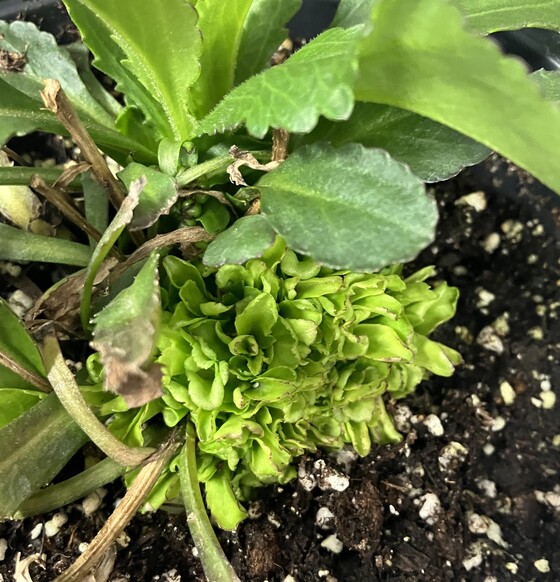 Leafy gall disease (caused by Rhodococcus fasciens) on Shasta daisy | DATCP E. Voigt
The Plant Industry Bureau Lab has recently detected leafy gall disease, caused by the bacterium Rhodococcus fasciens, on one Shasta daisy, ‘Daisy May’, and one petunia.
Both plants exhibited classic leafy gall symptoms, which include leafy galls (masses of tightly packed buds or shoots fused at the base of a stem), witches’ brooms, and fasciation (abnormal growth producing flattened or contorted tissue). These symptoms may occur at the base of the plant or on the aerial portion.
Many plants can get leafy gall disease, including common ornamentals, vegetables, field crops, and weeds. This disease can be transmitted to new plants by infected soil, seed, propagation material, insect vectors, and water. Disease transmission most commonly occurs via infected propagative material and water.
There are no known treatments for leafy gall. The best disease management strategy is to prevent the introduction of it. If the bacterium is detected, growers should follow strict sanitation practices and rogue symptomatic plants to control the disease.
_____________________________________
|
|
 Spruce budworm (Choristoneura fumiferana) larva on balsam fir | Neil Thompson, University of Maine at Fort Kent, Bugwood.org
Christmas trees are an important crop in Wisconsin, consistently placing in the top ten Christmas tree-producing states in the US. One of the most popular Christmas trees grown is the balsam fir. To help keep these beautiful and fragrant trees thriving, now is a good time to be on the lookout for spruce budworm infestations. Although named for its correlation to spruce trees, spruce budworm is also found on balsam firs. Spruce budworms are native to Wisconsin, with populations that rise and fall in periodic outbreaks.
Spruce budworm caterpillars feed on new needles in the spring before pupating in mid-June and emerging as moths soon after. Adult moths mate and lay eggs on the underside of tree needles for the winter before hatching in the following spring. It is more common for matured balsam fir and spruce to be the preferred host, but spruce budworms can also defoliate younger trees.
If defoliated, balsam fir and spruce cannot produce a succession of new needles in the same year. Defoliation happens at a higher level in the upper portions of trees. Needle loss occurring every spring for more than a couple of years will be noticeable by bare branches throughout the tree leading to tree death.
Some budworm populations will collapse once they have exhausted the food source in an area. For example, in native Wisconsin stands, population collapse is happening where severely defoliated trees are now dead or dying. Remember that balsam fir stands or stands with high numbers of balsam fir are often more severely impacted.
While outbreaks occur every 30-50 years, each outbreak lasts an average of 10 years. The current outbreak began in 2012, but unfortunately, it appears populations are continuing, and it is unclear when they will collapse again.
_____________________________________
|
|
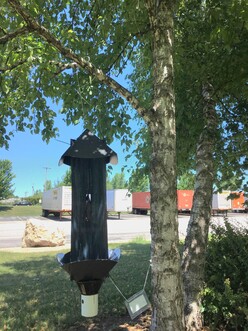
The DATCP Plant Industry Bureau is comprised of two sections: Plant Protection and Pest Survey. Plant Protection conducts inspections for nurseries and other green industry plant product producers while the Pest Survey Program conducts surveys for plant pests that threaten Wisconsin’s agriculture and natural resources. Some of our surveys are targeted at specific exotic insects, pathogens, nematodes, and weeds identified as national priority pests. These “early detection” activities are accomplished with funding provided through USDA Cooperative Agricultural Pest Survey (CAPS) Program and Plant Protection Act (PPA 7721) agreements.
This season, our pest survey program is carrying out six separate early detection surveys in crop, orchard, garden, forest, and industrial environments for 29 different plant pests. The survey targets are as follows:
-
Fruit pests: blueberry maggot (Rhagoletis mendax), European cherry fruit fly (Rhagoletis cerasi), summer fruit tortrix moth (Adoxophyes orana), and velvet longhorned beetle (Trichoferus campestris).
-
Vegetable pests: leek moth (Acrolepiopsis assectella), potato spindle tuber viroid (PSTVD), swede midge (Contarinia nasturtii), and tomato brown rugose fruit virus (ToBRFB).
-
Small grains pests: cereal cyst nematodes (Heterodera filipjevi and H. avenae), cucurbit beetle (Diabrotica speciosa), false root-knot nematode (Naccobus aberrans), Mediterranean cyst nematode (Heterodera latipons), sunn pest (Eurygaster integriceps), wheat blast (Magnaporthe oryzae Triticum pathotype), and two exotic snails (Cernuella virgata and Cochlicella).
-
Forest pests: black fir sawyer (Monochamus urussovii), black spruce beetle (Tetropium castaneum), brown spruce longhorned beetle (Tetropium fuscum), European pine shoot moth (Rhyacionia buoliana), European spruce bark beetle (Ips typographus), large pine weevil (Hylobius abietis), nun moth (Lymantria monacha), pine-tree lappet (Dendrolimus pini), Siberian silk moth (Dendrolimus sibiricus), six-toothed bark beetle (Ips sexdentatus), spotted lanternfly (Lycorma delicatula), and walnut twig beetle (Pityophthorus juglandis).
Several of these pests, such as blueberry maggot, swede midge, and velvet longhorned beetle, have been detected in Wisconsin in recent years, but information on their distribution and potential impact is lacking. Most of the other organisms listed have not yet been found in the state. Results of our 2023 detection surveys will be shared in Field Notes and made available at the end of the year on the NAPIS Pest Tracker website.
|
_____________________________________
|
|

As we move into summer, it is important for nursery dealers to examine what kind of stock is being held and how that stock is being treated. This is especially important for pre-packaged and bagged plant products. These products usually contain dormant rootstock that is then packed into a plastic bag with moist growing medium. In theory, this allows the plant to have a long shelf life in its dormant state.
DATCP typically finds these products offered for sale inside the stores, where they are exposed to warmth and light. This becomes a problem around mid-late spring when these plants break dormancy and start to show signs of green growth. Since these plants are often uncared for, they typically wither and die on the shelf.
Once bagged/packaged stock start showing signs of green growth they must then be treated like all other perennial stock, which means having ready access to sunlight and water. Preferably, they would be unpacked and potted up. If that is not possible, they need to be sold quickly, as there is a very small window of viability before the plant will die.
Per Wisconsin statue 94.10(6)(a), "a nursery grower or nursery dealer shall maintain facilities that are reasonably adequate for the care and keeping of nursery stock held for sale, so that the nursery grower or nursery dealer can keep the nursery stock in healthy condition pending sale"; and 94.10(7)(b)2, nursery dealers cannot “sell, offer to sell, or distribute any nursery stock that the nursery grower or nursery dealer knows, or has reason to know, will not survive or grow.”
If you still are carrying this kind of pre-packaged, 'dormant' plant stock, it is time to regularly check for and remove dead plants from sale.
|
_____________________________________
|
|
 Repackaging seed for sale requires a Seed Labeler License | DATCP K. Jerabek
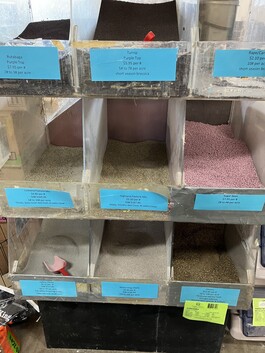
A reminder to anyone selling seed for planting out of bulk bins, or anyone selling seed for planting that they've repackaged: you likely need a Seed Labeler License from DATCP.
A seed labeler is any business or person whose name appears on a seed label or who opens containers of agricultural, lawn or vegetable seed to sell all or part of. Labels must include information about the percentages of different kinds of seeds in the package, germination, as well as treatment, inoculation, or coating. Complete labeling requirements are listed in Wis. Admin. Code § ATCP 20.
Another issue commonly encountered during seed inspections, besides not having a license if needed, is when expired seed is found being offered for sale. Retailers should regularly inspect seed being sold and if the seed is expired, it cannot be sold until it has been retested and relabeled. Selling expired seed is a violation of the seed law under Administrative Code, ATCP 20.04 & 20.06.
You do not need a seed label license if you sell:
-Seed grown and sold exclusively on your own farm
-Seed in unopened bags or containers labeled by a licensed seed labeler
Seed licenses are annual, effective January 1 through December 31. The cost is based on gross annual sales and ranges from $25 for sales less than $10,000 up to $2,500 for sales of $100 million or more. A complete fee schedule is available in Wis. Stat. § 94.43-46.
|
_____________________________________
|
|
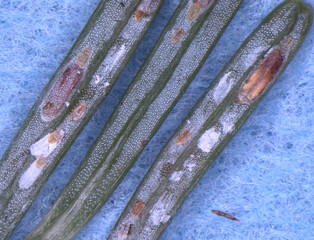
DATCP’s proposed permanent rule changes to ATCP 21 (AKA Clearinghouse Rule CR 22-022), relating to Plant Inspection and Pest Control, will become effective on July 1, 2023, after the final rule draft, certified by DATCP Secretary Randy Romanski on April 26, 2023, is published in the June B Administrative Register. (image left: EHS male and female nymph stages, DATCP)
An advisory committee made up of industry, university researchers, and agency partners provided input on the rule development in 2021. Since that time, we have been holding hearings and channeling the rule through the Governor’s office and the legislature. This permanent rule change, which has been in the works since 2020, rescinds quarantines for pine shoot beetle (ATCP 21.12), emerald ash borer (ATCP 21.17), and thousand cankers disease (ATCP 21.21) due to lack of serious pest impacts, the quarantine outliving its ability to contain the pest, federal deregulation, or a combination of factors. The rule change also revises quarantines for hemlock woolly adelgid (ATCP 21.16) and Phytophthora ramorum (ATCP 21.19) to ensure that the infested area, host range, and regulated articles reflect best available science, current pest distribution, and host associations.
Finally, this rule change also creates a new exterior quarantine for elongate hemlock scale (EHS) in Wisconsin (which will be known as ATCP 21.23), the only specific regulation for this pest in the US. Rationale for quarantining EHS included the dozens of times inspectors have detected it on cut fir Christmas trees, fir wreaths, and hemlock nursery stock from out-of-state, coupled with the fact that EHS had never been detected on the landscape in Wisconsin previously. Other reasons for the regulation are that EHS is hard to control with pesticides and because it seriously impacts tree health, posing serious threats to the Christmas tree industry and our unique, native hemlock and balsam fir forests in Wisconsin.
Over the coming weeks, staff will develop a compliance agreement for the new EHS quarantine, update our regulatory summary on the National Plant Board website, and reach out to nursery growers, Christmas tree dealers, wreathmakers and others who import hemlock and fir (the favorite hosts of EHS) from the infested area, which includes many eastern states (CT, DE, GA, KY, ME, MD, MA, MI, NH, NJ, NY, NC, OH, PA, RI, SC, TN, VT, VA, WV) to make sure they understand and know how to follow the new regulation. We are hopeful that permanent changes to ATCP 21 will protect native forests and our green industry from invasive pests like EHS for years to come, and remove other outdated regulations.
|
_____________________________________
|
|
|
|
|